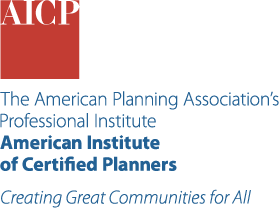Putting Sustainable Zoning into Practice
Zoning Practice — July 2013
By Elizabeth Garvin, AICP

Significant environmental, economic, and social challenges that are regional, national, or global in cause are increasingly the subject of local responsibility and action. This trend is partially attributable to recession-related federal budget reductions, but it's also related to increasing citizen pressure to "act locally."
Often, the drive to resolve these issues locally is pushed by residents and businesses who want more sustainable communities; that is, communities that are more resilient in the face of anticipated (and unanticipated) future change. To meet these demands, many communities are making changes to their local land development regulations so that sustainability is both figuratively and literally built-into the process and outcome.
This issue of Zoning Practice provides a survey of current and emerging sustainable zoning provisions available at the local level. And it highlights the purpose and general approach for each category of regulation.
Details
About the Author
Elizabeth Garvin, AICP


